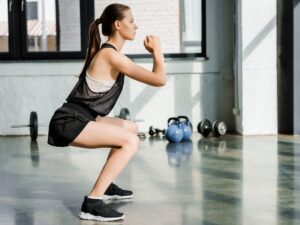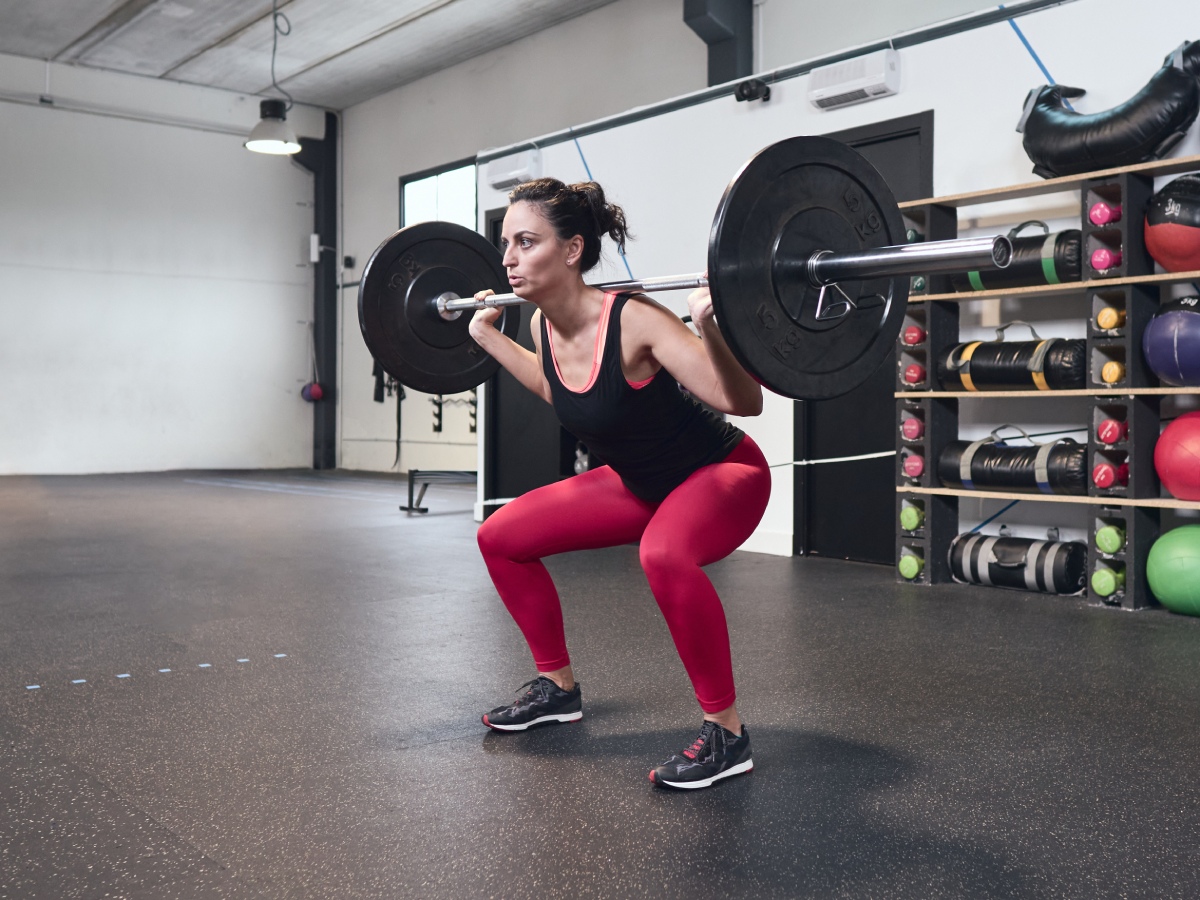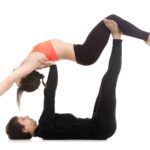Introduction to Functional Strength Training
Functional strength training is a fitness approach that focuses on building strength for real-life movements. Unlike traditional strength training, which often targets isolated muscle groups, functional strength training improves the body’s ability to perform everyday tasks with more ease and efficiency. Whether you’re lifting groceries, climbing stairs, or bending to tie your shoes, functional fitness training prepares your muscles for these movements by enhancing your balance, coordination, and endurance.
At its core, functional strength training involves exercises that mimic natural body movements. It engages multiple muscle groups simultaneously, ensuring your body becomes stronger in ways that directly translate to daily activities. This approach is beneficial for people of all ages, from athletes to those looking to stay fit and healthy.
The benefits of functional strength training are vast. Not only does it help improve posture and stability, but it also reduces the risk of injury by strengthening muscles and joints. Regular functional fitness training enhances flexibility, increases muscle endurance, and boosts metabolism, contributing to overall fitness and well-being. For example, strength training for runners can help prevent injuries and improve endurance by focusing on muscles used in running.
By incorporating functional strength exercises into your routine, you can enjoy greater mobility and strength that supports a more active lifestyle, whether you’re an athlete, a busy professional, or simply someone looking to enhance your physical capabilities.

What is Functional Strength Training?
Functional strength training is a specialized fitness approach designed to enhance your ability to perform everyday movements with ease and efficiency. It involves exercises that target multiple muscle groups at once, mimicking the types of movements you do in your daily life—such as lifting, bending, squatting, or twisting. The idea is not just to build muscle but to improve your overall functional capacity, making it easier to carry out activities at work, home, or in sports.
Unlike traditional strength training, which often isolates specific muscle groups with exercises like bicep curls or leg presses, functional fitness training focuses on compound movements that engage multiple muscles working together. This approach better mirrors the way our bodies move naturally, providing strength that is practical and useful for daily tasks.
For example, when you pick up a box, you don’t just use your arms—you rely on a coordinated effort between your core, legs, and back. Functional fitness training aims to strengthen these interconnected muscle groups through exercises that simulate real-life actions.
Strength training for runners, for instance, can greatly benefit from functional training. Runners need strong legs, a stable core, and proper posture to avoid injuries and improve performance. Exercises like lunges and deadlifts can strengthen the muscles used in running, helping to boost endurance and stability while reducing the risk of overuse injuries.
Some common examples of functional strength training exercises include:
- Squats: These engage the legs, hips, and core, improving lower body strength and stability.

- Lunges: Effective for targeting the legs and glutes, lunges also improve balance and coordination.

- Deadlifts: A powerful movement that strengthens the posterior chain (back, glutes, hamstrings), enhancing posture and mobility.

Why Functional Strength Training is Important
Functional strength training is crucial for improving your overall fitness, making everyday movements easier, and enhancing your athletic performance. This type of training goes beyond just building muscle; it’s about developing strength and stability that directly benefits real-world activities. Whether you’re lifting groceries, bending down to tie your shoes, or running a marathon, functional strength training helps you perform these movements with ease and reduces the risk of injury.
Improve Daily Functional Movements
One of the most significant benefits of functional strength training is that it enhances your ability to perform daily tasks. Activities like lifting, bending, carrying, or reaching require coordination and strength from multiple muscle groups. By training with functional exercises like squats, lunges, and deadlifts, you strengthen muscles that are engaged in these common actions, making everyday tasks easier and more efficient. This is especially beneficial for people with physically demanding jobs or those who want to maintain independence as they age.
Enhance Athletic Performance and Injury Prevention
For athletes, particularly runners, functional strength training is essential. Strength training for runners helps improve performance by building the specific muscle groups involved in running, such as the legs, hips, and core. Additionally, functional training boosts stamina, endurance, and speed by training muscles to work together. It also helps prevent injuries by ensuring muscles and joints are strong and well-coordinated, reducing the likelihood of strains, sprains, and overuse injuries.
Boost Metabolism and Improve Posture
Another great benefit of functional strength training is its positive impact on metabolism. By engaging large muscle groups and incorporating full-body movements, functional training helps increase calorie burn, even at rest. This leads to improved fat loss and muscle toning. Moreover, functional strength exercises strengthen the core, which supports better posture and alignment, leading to reduced back pain and overall discomfort. Improved posture not only helps you feel better but also contributes to a healthier spine and reduces long-term strain on your muscles and joints.
Better Coordination and Balance
Functional strength training also improves coordination and balance, essential for both athletic performance and everyday life. Exercises like single-leg squats, planks, and stability ball exercises challenge your body to stabilize itself while performing movements, which improves proprioception (awareness of body position in space). This enhanced coordination and balance are especially beneficial for older adults, as it helps prevent falls and maintain mobility.
Strength Training for Runners: How Functional Training Helps
Runners rely on a combination of endurance, strength, and flexibility to improve their performance and reduce the risk of injury. Functional strength training plays a crucial role in enhancing a runner’s performance by targeting the specific muscles and movement patterns used during running. It focuses on strengthening key muscle groups, improving flexibility, and enhancing coordination, which ultimately leads to better endurance, speed, and injury prevention.
How Functional Strength Training Benefits Runners
Incorporating functional strength training into a runner’s routine strengthens the muscles that support running mechanics, such as the glutes, hamstrings, calves, and core. By building these muscles, functional training helps improve running posture, stride efficiency, and overall endurance. Additionally, it reduces the risk of common running injuries like shin splints, knee pain, and IT band syndrome by addressing muscle imbalances and improving flexibility.
Strengthening Key Muscles for Improved Endurance, Speed, and Injury Prevention
For runners, having strong stabilizing muscles is just as important as building leg strength. functional fitness training helps runners develop both the large muscle groups (like the quads and hamstrings) and the smaller, stabilizing muscles in the hips, core, and ankles. This balance between strength and stability leads to improved endurance, faster running times, and fewer injuries. Strengthening the core and lower body enhances posture and form, helping runners maintain a more efficient stride over long distances.
Specific Exercises for Runners
Certain functional strength training exercises are particularly beneficial for runners:
- Single-Leg Deadlifts: This exercise improves balance and strengthens the glutes, hamstrings, and lower back—key muscles for runners.
- Step-Ups: Step-ups target the quads, hamstrings, and glutes while helping to improve stability and coordination in the lower body.
- Stability Ball Work: Using a stability ball for exercises like leg curls or planks engages the core, glutes, and stabilizing muscles, improving posture and balance.

Core Components of Functional Strength Training
To achieve the full benefits of functional strength training, it’s important to focus on three key components: mobility, stability, and strength endurance. These elements work together to enhance your overall functionality and performance.
Mobility
Mobility is the ability to move freely and comfortably through a range of motion. It is a critical component of functional strength training that helps to prevent injury and improve overall performance. Runners, for instance, require flexibility in their hips, hamstrings, and calves to maintain an efficient running form. Mobility exercises like dynamic stretching, foam rolling, and yoga can improve joint flexibility and muscle length, ensuring proper movement patterns.
Flexibility and Joint Mobility
Improved flexibility and joint mobility prevent tightness, muscle strains, and discomfort during movement. Stretching and mobility exercises should complement strength work to maintain a balance between strength and flexibility. For runners, this might involve stretches targeting the hip flexors, calves, and hamstrings to keep the body limber and less prone to injury.
Stability
Stability refers to the ability to control movement and maintain balance under load. For functional strength training, core strength and stability are fundamental. A strong core supports better posture, which is essential for both running and daily activities. By stabilizing the spine and pelvis, core strength allows for better transfer of power from the lower body to the upper body and vice versa.
Importance of Stabilizing Muscles
Stabilizing muscles are responsible for keeping the body aligned and balanced during movement. When running, these muscles help control movement and maintain posture, reducing the risk of injuries caused by poor alignment or overuse. Functional exercises such as planks, stability ball exercises, and single-leg movements challenge the body to stabilize itself, improving overall performance.
Strength Endurance
Strength endurance refers to the ability of your muscles to perform for extended periods without fatigue. For runners, having strong muscles that can endure repetitive motion is key to performance. Functional strength training focuses on building endurance in the muscles that are used most during running, helping them withstand long runs, sprints, and repetitive movements over time.
Building Muscular Endurance for Long-Term Functionality
To build endurance, functional strength training incorporates lower-rep, high-set exercises that stimulate the muscles to adapt over time. This ensures that muscles can perform under stress for extended periods, improving both athletic performance and long-term functionality.
Functional Strength Training vs Traditional Strength Training
When it comes to building strength and improving overall fitness, two main approaches are commonly discussed: functional strength training and traditional strength training. While both methods aim to enhance muscle strength, they focus on different aspects of fitness and are suited to various goals. Understanding the key differences can help you decide which approach aligns with your fitness objectives.
Comparison of Functional Exercises and Isolation Exercises
Traditional strength training often involves isolation exercises that target a specific muscle or muscle group, such as bicep curls or leg extensions. These exercises are designed to build size and strength in particular muscles but do not necessarily improve the body’s overall coordination or functional capacity. While isolation exercises are useful for muscle development, they do not always translate directly to improved performance in everyday activities or sports.
On the other hand, functional strength training focuses on compound movements that engage multiple muscle groups simultaneously, mimicking real-life movements. Exercises like squats, deadlifts, and lunges are examples of functional exercises that train the body as a whole, improving not only strength but also balance, coordination, and endurance. This approach helps improve the body’s ability to perform everyday tasks—whether it’s picking up a heavy object or stabilizing the body during a run.
Why Functional Exercises Promote Overall Body Strength
One of the primary benefits of functional strength training is that it promotes overall body strength by engaging multiple muscle groups in a single movement. Functional exercises mimic real-world actions, which means the strength gained from these exercises is more applicable to daily tasks and athletic performance. This holistic approach helps improve posture, balance, and stability while also preventing muscle imbalances that can lead to injury.
In contrast, muscle isolation exercises primarily strengthen specific muscles, which can result in an imbalance if not complemented with full-body exercises. For example, if a runner focuses only on isolation exercises for their legs (e.g., leg presses) and neglects core and upper-body strength, their performance may suffer, and they may be more prone to injury. Strength training for runners benefits from a functional approach because it develops strength in the key muscle groups needed for running, enhancing performance while reducing the risk of injury.
When to Use Functional Strength Training vs Traditional Training
Both functional strength training and traditional strength training have their place in a well-rounded fitness routine. If your goal is to build overall strength, improve mobility, and prevent injuries, functional training is the better option. It’s especially effective for those looking to improve athletic performance, such as runners or anyone who needs to perform full-body movements regularly.
Traditional strength training can be useful if you are looking to increase muscle size or target specific muscle weaknesses. It’s also a good choice for those recovering from injury or seeking to focus on individual muscles that may need extra attention. Ideally, combining both methods in a balanced fitness program can help you achieve well-rounded strength and performance.
Top Functional Strength Training Exercises to Try
Incorporating functional strength training into your routine is easy with a variety of exercises that target multiple muscle groups at once. Below are some top functional exercises to help you build strength, improve mobility, and enhance overall fitness:
Full-Body Movements
- Squats: A foundational exercise that targets the quads, glutes, hamstrings, and core. Squats improve leg strength, stability, and posture.
- Lunges: A great exercise for the legs and glutes, lunges also enhance balance and coordination as they require each leg to work independently.
- Push-Ups: This bodyweight exercise engages the chest, shoulders, triceps, and core, making it a powerful move for upper-body strength and stability.
Compound Exercises That Engage Multiple Muscle Groups
- Kettlebell Swings: This dynamic exercise works the hips, glutes, core, and shoulders. Kettlebell swings build power and endurance, making them a great addition to any functional training routine.
- Clean and Press: A complex movement that involves lifting a barbell or dumbbell from the floor to overhead. It strengthens the lower body, core, and upper body while improving coordination and stability.
Bodyweight Exercises
- Planks: A core-strengthening exercise that also engages the shoulders, back, and glutes. Planks improve stability and help develop a solid foundation for functional movement.
- Burpees: A full-body exercise that combines a squat, push-up, and jump. Burpees improve cardiovascular endurance, strength, and agility.
- Mountain Climbers: A fast-paced exercise that targets the core, shoulders, and legs. It enhances overall endurance, agility, and coordination.
How to Incorporate Functional Strength Training Into Your Routine
If you’re new to functional strength training, integrating it into your routine can significantly improve your overall fitness, mobility, and performance. Whether you’re a runner, athlete, or someone looking to enhance daily functional movement, the following tips will help you get started and make the most of your training.
Tips for Beginners to Start Functional Strength Training
- Start with the Basics: Begin by mastering fundamental movements such as squats, lunges, and push-ups. These exercises lay the foundation for more complex movements and will help you develop the stability and mobility needed for functional strength training.
- Focus on Form: Proper technique is essential in functional strength training to prevent injuries and maximize effectiveness. Prioritize good form over heavy weights, especially in the beginning. Consider working with a coach or trainer if you’re unsure about your form.
- Use Bodyweight Exercises: If you’re just starting, bodyweight exercises like planks, squats, and step-ups are excellent for building strength and learning movement patterns. They also require no equipment, making them convenient and accessible.
How Often to Train for Optimal Results
For functional strength training, aim to train at least 2-3 times per week. This frequency allows your body to build strength and endurance while giving your muscles time to recover. If you’re combining functional strength with other types of training, such as strength training for runners or cardio, ensure you allow for sufficient recovery between sessions.
For best results, alternate between strength training days and active recovery days. On recovery days, you can focus on light cardio or flexibility training, such as yoga or dynamic stretching.
Integrating Functional Strength with Cardio and Flexibility Training
While functional strength training is key for building overall strength and mobility, it should complement other aspects of fitness like cardio and flexibility training. For example, running or cycling can be incorporated on non-strength training days to improve cardiovascular health, while stretching or yoga can enhance flexibility and mobility.
Integrating functional strength with cardio allows for a balanced routine that improves both your aerobic capacity and muscle endurance. If you’re a runner, strength training for runners can prevent injury, improve posture, and increase speed. Flexibility exercises, such as dynamic stretching, will enhance your range of motion and reduce stiffness after strength workouts.
Common Mistakes to Avoid in Functional Strength Training
When starting or progressing in functional strength training, it’s essential to be mindful of common mistakes that can hinder your progress or lead to injury.
Poor Form and Technique Leading to Injuries
One of the most common mistakes in functional strength training is poor form. Without proper technique, you increase the risk of injury, especially in complex movements that require coordination and stability. Always focus on correct alignment, and if you’re unsure about your form, use lighter weights or seek guidance from a coach or trainer. This will ensure that you build a solid foundation for more advanced exercises.
Overtraining or Undertraining Key Muscle Groups
Another common mistake is neglecting to train certain muscle groups or overtraining others. Functional strength training should target all major muscle groups, including your core, legs, back, and shoulders. Focusing too much on specific areas can create muscle imbalances, leading to injuries or poor performance. Ensure you have a balanced routine that works for your entire body.
Skipping Warm-up and Cool-down Routines
Skipping warm-ups and cool-downs is a mistake many make, but it’s crucial to prepare your body for exercise and help it recover afterward. A proper warm-up increases blood flow to muscles, preparing them for strength training. Likewise, cooling down and stretching after your workout helps to prevent tightness and aids in muscle recovery. Incorporating both into your routine ensures that you’re minimizing the risk of injury and maximizing the benefits of your workout.
Conclusion
Functional strength training is an incredibly effective way to build overall strength, improve posture, and enhance your ability to perform everyday movements with ease. By incorporating functional exercises like squats, lunges, and kettlebell swings into your routine, you’ll not only increase muscle endurance but also reduce the risk of injury and improve mobility.
As you start your functional strength journey, remember to focus on proper form, integrate it with cardio and flexibility training, and avoid common mistakes like skipping warm-ups or overtraining. Whether you’re a runner, athlete, or just someone looking to improve your fitness, functional fitness training is a powerful tool that will help you build a stronger, more resilient body.
Start today and see the benefits for yourself!
Also Read: Yoga Poses for Two People to Enhance Flexibility and Trust









